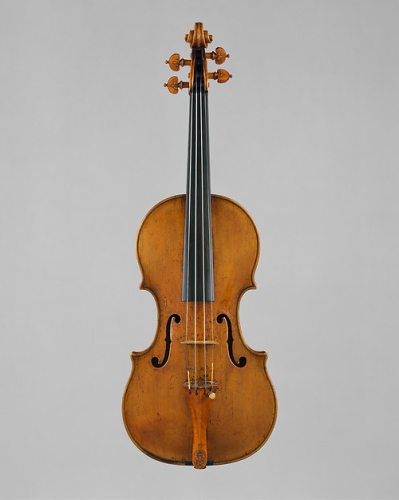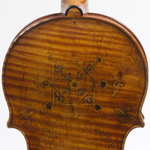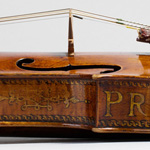Andrea Amati (Italian, ca. 1505–1578)
Violin, ca. 1559
Spruce, maple, ebony; 7 15/16 x 22 5/8 in. (20.2 x 57.5 cm)
The Metropolitan Museum of Art, New York, Purchase, Robert Alonzo Lehman Bequest, 1999 (1999.26)
Andrea Amati developed the modern form of the violin in Cremona by the mid-sixteenth century. He was the first member of the famous Cremonese school of lutherie, which included several generations of his own family, the Guarneris, and Antonio Stradivari. Other traditions of lutherie also developed in northern Italian cities such as Brescia and Milan.
This decorated violin bears the Latin motto Quo unico propugnaculo stat stabitque religio (By this bulwark alone religion stands and will stand) on its ribs and has the remains of decoration on its back, including fleurs-de-lis in the corners. Recent scholarship suggests that this instrument may have been a part of a set made as a gift for the marriage of Philip II of Spain to Elisabeth Valois in 1559.
Prelude from Select Preludes & Vollentarys for the Violin by Nicola Cosimi (fl. ca. 1708)
Performed on the Amati violin by Jörg-Michael Schwarz. Recorded at The Metropolitan Museum of Art, February 2010.
Heilbrunn Timeline of Art History: “Violin Makers: Nicolò Amati (1596–1684) and Antonio Stradivari (ca. 1644–1737)“


 Met Guitars App
Met Guitars App

